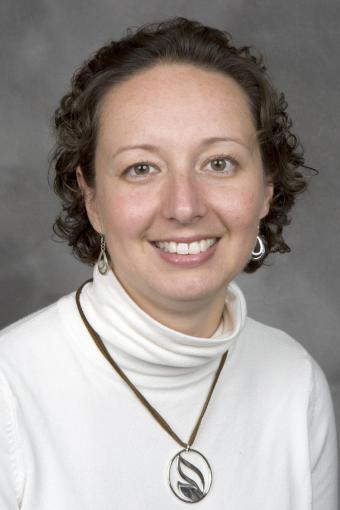PROVIDENCE, R.I. [Brown University] — It started over a decade ago with six young women who vowed to stay in touch and support each other as they started their careers in the male-dominated Earth sciences. Since then, the Earth Science Women’s Network has grown into an international peer-mentoring and advocacy network more than 2,000 members strong.
This week, ESWN launches as a nonprofit organization, a move that will enable the group to expand its mission to help advance the careers of women in the Earth sciences.
“The ESWN is about making women in the Earth sciences feel supported and add to their ability to be successful and stay in science,” said Meredith Hastings, assistant professor of Earth, environmental, and planetary sciences at Brown and one of the group’s co-founders. “As a nonprofit, we’ll be able to raise the money we need to maintain our network and to develop new programs.”
The ESWN began over an informal dinner at the annual meeting of the American Geophysical Union in 2002. The six women around the table had been seeing each other at conferences for the past several years and enjoyed the opportunity to share their experiences in the workplace.
“We found that peer mentoring to be really valuable,” said Hastings, who was at that first dinner. “We would go back to our work situations inspired and reinvigorated. So at dinner that night we decided to keep in touch more often.”
They did so mainly over email, and each of the six invited more women to join. Soon a lively discussion group formed with hundreds of women from across the Earth science disciplines. Discussions addressed all manner of challenges facing women in the sciences.
“Statistically,” Hastings said, “women take on more of the timesharing burden of family care, which can be a challenge in work-life balance. Our field is also predominantly men, so the challenge is feeling connected and supported and finding good role models. That’s true in many fields, but particularly in the Earth science. And there have been a number of articles recently on sexual harassment in field work, which is something that happens more often to women than men.”
ESWN provided a forum to discuss these challenges and others and to exchange ideas about how to overcome them.
By 2009, ESWN membership had swelled to 750. With the help of a $1-million grant from the National Science Foundation, the group began holding career development workshops focusing on leadership and communications skills. The funding also helped in the creation of a new website with expanded networking resources for members.
Today, ESWN members number more than 2,000, representing a broad range of Earth sciences. The establishment of a nonprofit was the next logical step for the organization, Hastings said.
“Becoming a nonprofit gives us a bit more autonomy in deciding what direction we want to go in terms of our activities,” she said. “I think in the past we’ve been very reactionary in the types of activities we’ve done, tailoring our activities to whatever grant opportunities that were out there. But now we’re looking to be able to set the agenda for ourselves.”
For Hastings, one of the important aspects of that new flexibility is the ability to make small investments that can make a big difference in a woman’s career.
“I have two little girls, ages two and three,” she said. “Luckily Brown has provided some extra support for childcare for work-related travel, but this is really unusual. Many of our members have to limit career-advancing travel, like giving talks at major conferences or doing fieldwork because they cannot afford to bring their kids and care-provider with, nor can they afford to leave them at home and hire extra babysitters. It is a catch-22, where a small amount of support could make a huge difference.”
In the long run, the group has its sights set on shoring up the so-called leaky pipeline — the relative scarcity of women reaching senior and leadership positions in science.
“There has been a lot of great progress made in getting more women to get Ph.D.s, but there’s still this problem of getting them to senior positions,” Hastings said. “The support we provide is really a bottom-up approach to addressing the problem through peer mentoring and professional development. But we’re also interested in the top-down approach — trying to influence the kinds of rules and regulations that are being made on things like daycare, maternity leave, family care leave, and the timing of the tenure clock.”
And as it has been since the beginning, ESWN will remain first and foremost a support network for its members.
“We’ve grown mostly by word-of-mouth from a group of just a few women to this amazing group of interesting and energetic women from all over the world,” Hastings said. “It’s been an amazing ride.”

